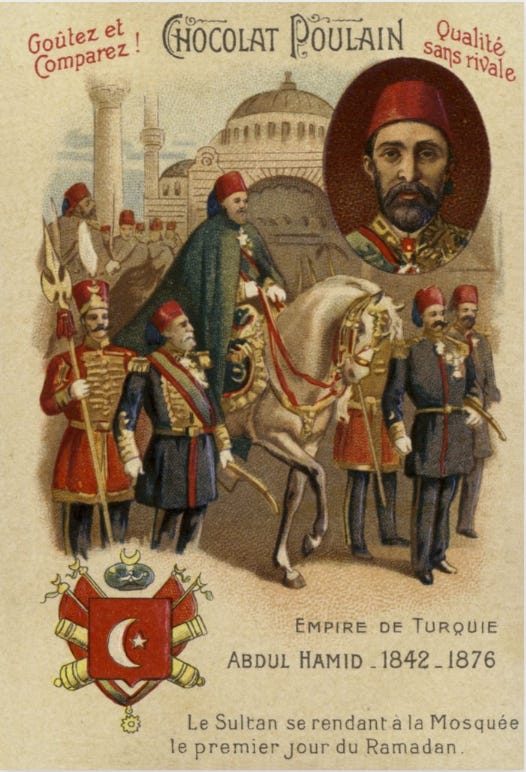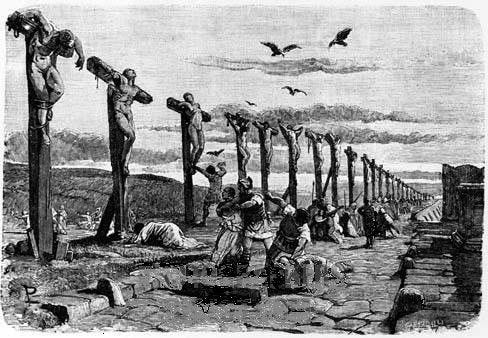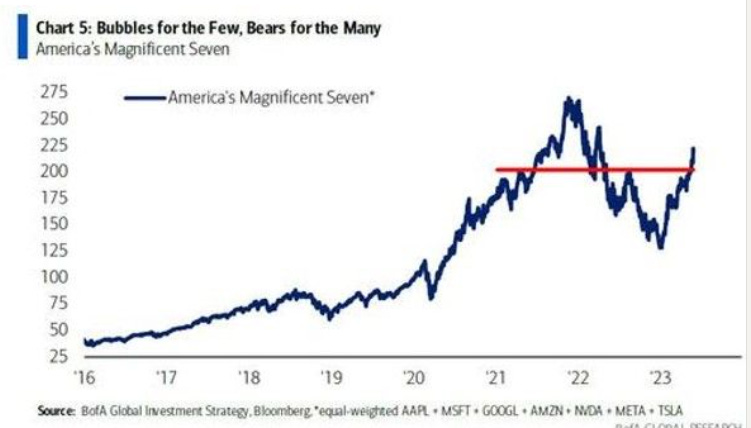The Ottoman Empire was a superpower for over 500 years (from the 14th to the 20th centuries.) It controlled chunks of Europe, North Africa, and the Middle East.
Sultan Abdul Hamid II (reigned 1876-1909) was a paranoid and authoritarian ruler obsessed with maintaining power.
Aside: Speaking of preserving control, it looks like the 2024 erection election will “feature” Biden vs. Trump (any parallel here?)
In the Ottoman Empire, The Sultan used military parades to project an image of strength and stability and intimidate his opponents.
His military parades were some of the most elaborate and lavish. They featured thousands of troops, marching bands, and artillery.
The sultan often rode at the head of the parade, dressed in a dazzling uniform and mounted on a magnificent horse.

Pageantry in Canada - A Standing Ovation for Genocide
Canada’s parliament gave a standing ovation during Zelensky joint address Friday to Yaroslav Hunka, a 98-year-old Ukrainian Nazi collaborator who served in a Nazi military unit during the Second World War implicated in the mass murder of Jews and others.
Friends of Simon Wiesenthal Center (FSWC) said in a strongly worded statement that it "is deeply disturbed over the Canadian Parliament’s recognition of a Ukrainian veteran who served in a Nazi military unit during the Second World War implicated in the mass murder of Jews and others.
FSWC is further outraged that parliamentarians in the House of Commons gave a standing ovation to the former soldier on Friday." It added, "Yaroslav Hunka, a 98-year-old immigrant from Ukraine, was introduced by Anthony Rota, Speaker of the House of Commons, as “a Ukrainian Canadian war veteran from the Second World War who fought for Ukrainian independence against the Russians” and “a Ukrainian hero and a Canadian hero,” ignoring the horrific fact that Hunka served in the 14th Waffen Grenadier Division of the SS, a Nazi military unit whose crimes against humanity during the Holocaust are well-documented."
Pageantry Past, From Rome to Present Day
The Roman Empire was known for its lavish and extravagant public spectacles, such as gladiator contests, sea battle re-enactments and chariot races. These spectacles entertained the masses and diverted their attention from the corruption and political instability plaguing the villagers.
The Parasitic class in Rome was the Emperor and Senate (which held 99% of the wealth), and in desperation to cling to power, these traits intensified:
- Depletion of resources. A few days ago, I wrote how Rome was running out of lumber to smelt its metals for war. Rome needed Bronze helmets, swords, spears, shields, chariot parts, breastplates, and helmets.
- Theft of resources. E.g., Bronze is an alloy of 88% copper and 12% tin, but Rome had to source its tin from foreigners. When Rome wanted raw materials, it would rob their neighbors (instead of trade with them). If there had been social media around the height of Rome, the neighbors would have posted #RomeRobs
- Currency Debasement. Rome debased her currency to fund more and more war adventures. That hashtag would have been #RomeRipOff
- Senseless and Harsh Laws. Rome passed hundreds of new laws to keep the masses smashed down, and public executions kept the villagers from questioning the wealth divide. That hashtag would have been #CucifyingKills
Pageantry along the Via Appia
The Via Appia was the most crucial road in the Roman Empire (connecting Rome to the port city of Brindisi in southern Italy.) It was one of the first Roman roads to be made of stone. It was well-engineered, with a smooth surface and a system of drainage ditches. The Via Appia was also lined with milestones, which marked the distance from Rome. The Via Appia was also a major route for trade and military campaigns and hosted Roman Military Pageants.
The Romans crucified villagers along public roads so that their executions would be seen by as many people as possible.
In 71 BC, the Roman general Marcus Licinius Crassus crucified 6,000 slaves along the Via Appia after they had been defeated in a slave rebellion. This was one of the largest mass crucifixions in Roman history.

The Byzantine Empire was a continuation of the Roman Empire that lasted from the 5th to the 15th centuries. The Byzantines were also known for their use of pageantry, particularly in the form of religious ceremonies and festivals. These events created a sense of unity and loyalty among the Byzantine people, even as the empire faced increasing threats from foreign invaders.
What does all of this have to do with gold and silver?
Each time there is a transition in power from era to era (like these 7 power transitions below), the dominant nation's currency fails.
Never has a currency remained stable from one superpower to the next; silver and gold are the only things recognized as money from regime to regime.
- Athens (500–300 BC)
- Macedon (300–100 BC)
- Roman Empire (100 BC–476 AD)
- Byzantine Empire (476–1453 AD)
- Arab Empire (632–1258 AD)
- Mongol Empire (1206–1368 AD)
- British Empire (1756–1945)
- United States (1945–present)

Meanwhile, we are living through the USA desperately clinging to power via Pageantry Proxies (too many to name but I will list just one)
*The Magnificent 7 propped up by Pageantry (and the Grand Marshal in our parade) is none other than the World’s most stellar PR firms (Forbes, WSJ, CNBC, Bloomberg, USA Today, ABC, CNN, NBC, MSNBC, Fox, etc)
 Term of the day *Magnificent 7
Term of the day *Magnificent 7
Refers to only 7 companies in the S&P 500. They are
1. AAPL
2. MSFT
3. GOOGL
4. AMZN
5. NVDA
6. META
7. TSLA
the other 493 stocks in S&P 500 up only 0.1%.
